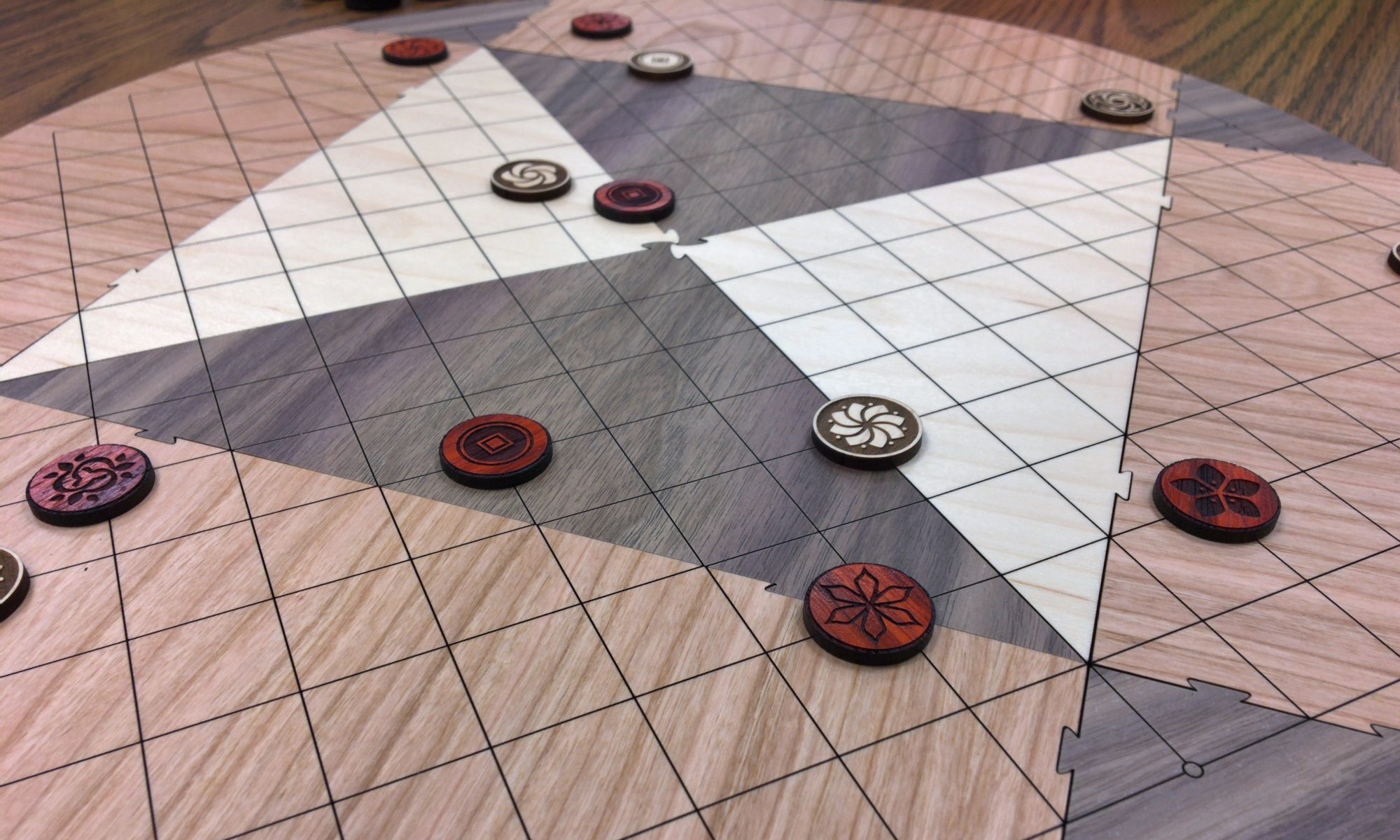Rules Downloads and Translations

Capture Pai Sho is created and designed by Tom Ford. Click here to see more.
Play online at SkudPaiSho.com
Objective
Have the most tiles on the board at the end of the game.
End of Game
The game ends when it is not possible for either player to capture any more tiles.
This can happen when all of a player’s tiles are captured, but also when remaining tiles are immortalized (that is, they can no longer be captured because all the tiles that can capture them have been captured), or a tile is endlessly chasing another (in which case players should agree to end the game).
Note: You can also calculate a win by checking to see if there is no possible way a player could end up with less tiles than their opponent. When playing online at The Garden Gate, this is checked automatically and the game will end. Though tiles could still be captured, the player who is guaranteed to end up with more tiles no matter what happens is the winner.
Tiles (in Capture Cycle order)
- Dai Li
- Vaatu
- Flying Boar
- Piandao
- Fish
- Unagi
- Kyoshi Warrior
- Lotus
- Dragon
- Air Monk
- Tree of Time
- Owl
Capture Cycle
Each tile can capture the next three tiles in the cycle. (Therefore, each tile can be captured by the previous three tiles in the cycle.)
Game Setup
Tiles are randomly selected and placed in the arrangement on the board as shown below.
Here is an example board setup:

Playing the Game
- Players alternate taking turns
- On a turn, you can move one of your tiles, choosing to either move or jump.
Movement
On a turn, a tile can either move or jump. Tiles can capture with either type of action.
Moving: Move up to 3 spaces (points). Tiles move along the lines on the board, so in some places, tiles can also move diagonally.
Jumping: Your tiles can jump over one of your own tiles in a normal direction of movement (along the lines of the board, including diagonal lines).
Your tiles can also jump diagonally if you have a tile occupying one of the two points it is jumping over (the other point being jumped may be empty or occupied by any other tile, including an opponent’s tile). For example, if you have a tile above or to the right of a Lotus tile, your Lotus tile can jump diagonally to the point that is up and to the right of it.
Capturing: When your tile is moved (or jumped) onto an enemy tile that it is able to capture, the enemy tile is removed from the game and the movement of the capturing tile ends.
Notes
- Immortalized tiles: If you capture three consecutive tiles in the Capture Cycle, one of your own tiles will not be able to be captured by your opponent, becoming immortalized. (Example: If you capture your opponent’s Lotus, Dragon, and Monk, then your Tree can no longer be captured by your opponent, because your opponent no longer has any tiles able to capture it.)
- Perfect protector: Each tile has a perfect protector, which is the tile that can capture all of your opponent’s tiles that are able to capture one of your tiles. (Example: the Fish is the Dragon’s perfect protector, because it can capture the Serpent, Kyoshi Warrior, and Lotus.)

You must be logged in to post a comment.